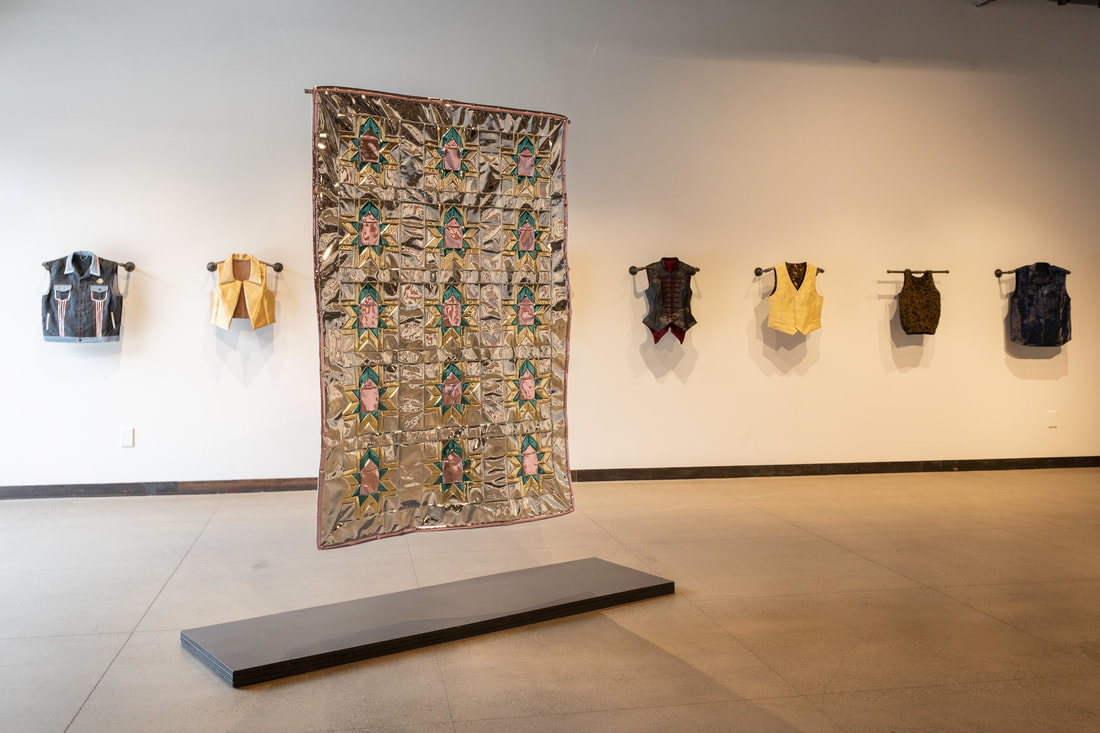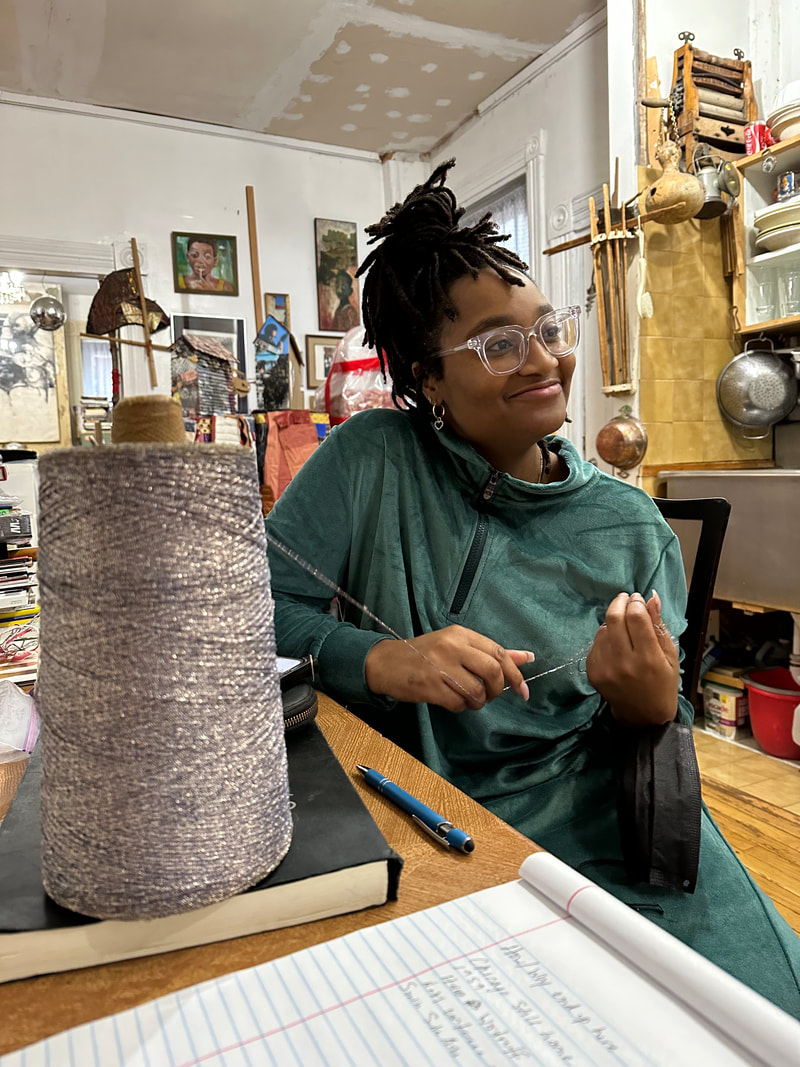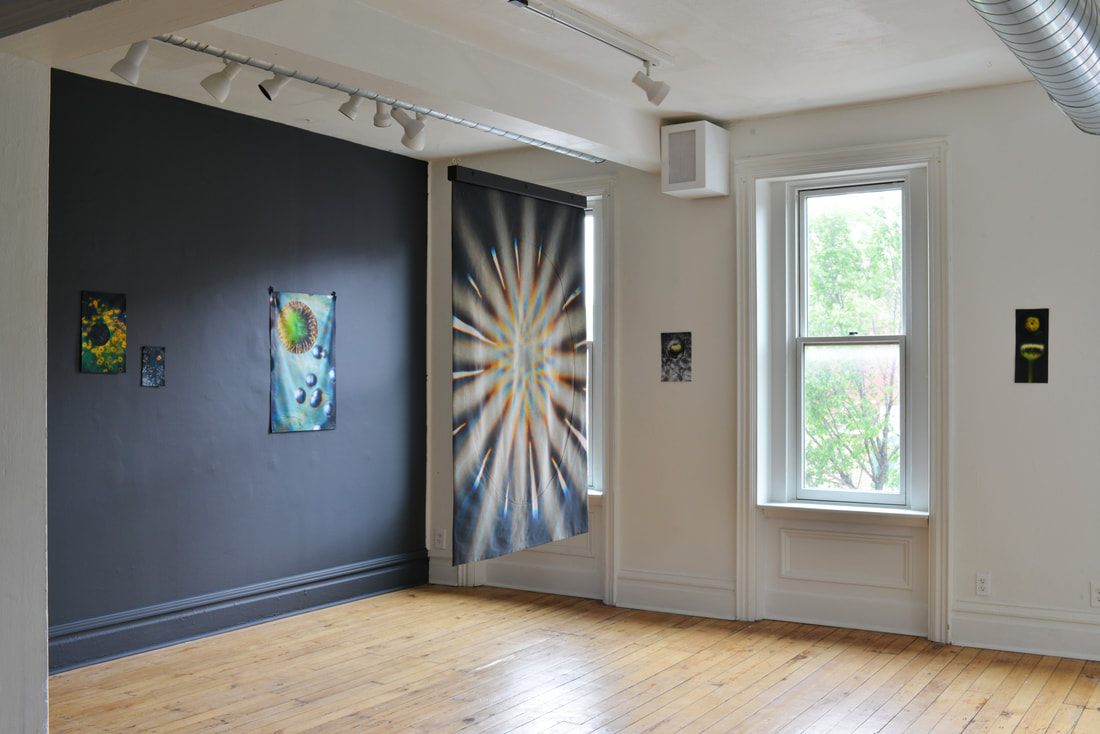By Sidney Mullis
Edited by Anna Mirzayan
Original Publish Date 8/27/2021
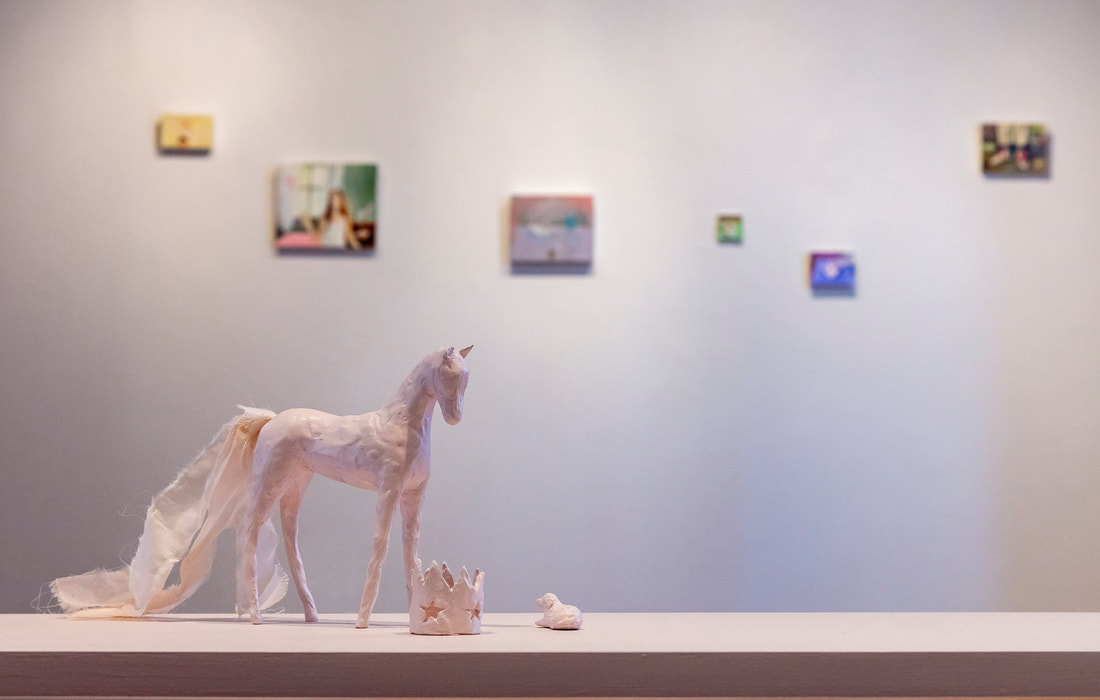
The views and opinions expressed in this article are solely those of the author. They do not reflect the opinions or views of Bunker Projects or its members.
The interior castle (2021) is a sweet and gentle exhibition of small paintings, drawings, and sculptures by NYC-based, Pittsburgh-grown artist Lacey Hall. The exhibition, stretching across two rooms, is hung in a loose gallery midline except for one object that secretly waits to be found. The work is personal in size with the smallest oil painting measuring 2-by-2 inches and the largest watercolors at 11-by-14. The paintings look like they could nestle into the palm of your hands and the watercolors feel like the book illustrations you poured over as a kid (instead of reading the boring three-word-sentence on the next page).
Spread across Bunker’s fireplace mantel are toy-sized clay objects that tempt you with play. A Barbie-sized horse, crown fit for a fig, and teeny-tiny lamb sit perched, waiting and willing. Painted calamine-pink, their rosy coats magnify the existing soothing quality of playtime and playthings. Their color is seen again—large-scale and enveloping—in the second room of the exhibition that has been painted the same balmy color.

The Interior Castle installation view at Bunker Projects, 2021
Working in ink, watercolor, gouache, acrylic, and oil, Hall shares moments of romantic escape. Her two-dimensional works reveal scenes of girls, teenagers and princesses isolated and unbothered in idyllic open fields, green forests, cool fountains, and sacred childhood bedrooms. The environments provide the young women with reprieve, or at least a moment of quiet transition. The surroundings sometimes shift into surreal terrain—as seen in Desert Race (2020), Runaway (2021), and Time will turn/the world will turn (2021)–where incongruous scale and opposing perspective live side-by-side. Yet, the young women are still unbothered. They are cozy—comforted by the absence of exterior logic.
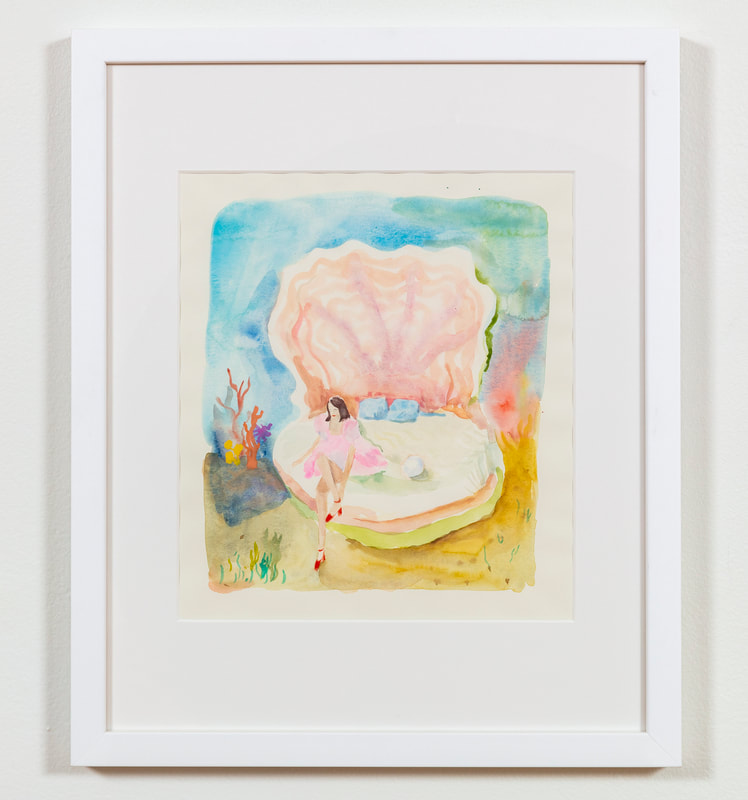
Pinctada, 2021
In Hall’s Pinctada (2021), for example, a young woman donning a pink dress with glorious puff sleeves is putting on her classy red heels despite clearly living underwater in an oversized, pearl-producing oyster. Breathing underwater? That is not a problem in this interior castle. The clear comfort of these spaces is made certain by the companion animals usually standing near the solitary young women. While they may be isolated—faraway from other places and people—the animals prove they are not alone. Their partnership seems vital for the possibility of reverie in these scenes.
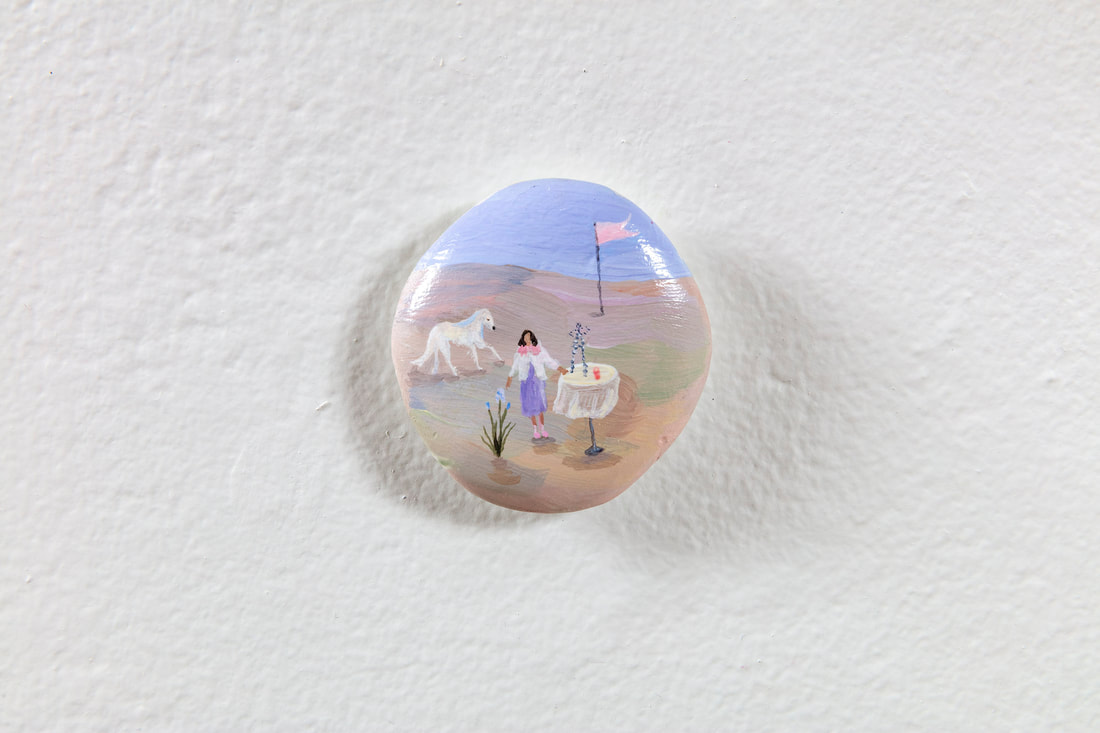
Desert Race, 2021
Horses, cats, and dogs—as seen in Desert Race (2020), Unsettling dream in a minidress (2020), Creamsicle (2020), Time will turn/the world will turn (2021), It’s not like I’m Invisible (2021), and Runaway (2021)—have anciently long and rich histories in painting. Their presence here is primarily one of close friendship—hardened by the grieving of dog death found in two artworks. In Time will turn/the world will turn (2021)—the only black ink drawing in the show—a flying angel whisks across the sky holding a dog. She ushers it lovingly forward by a large sash wrapped around its belly. On the ground is a canopy structure built entirely of bones marked with the blowing flag “Beloved Dog.” This terrestrial grave marker protects a dog-sized mound of bones—the same ones that the structure is made of.
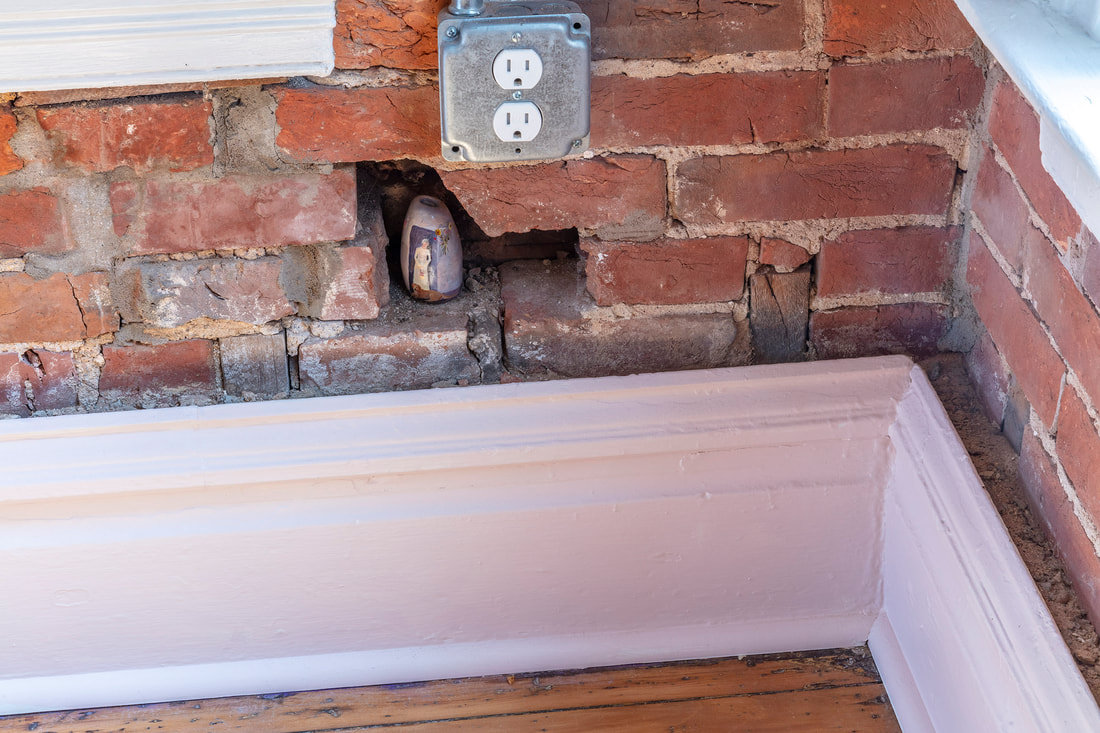
Missing my dog, 2020, Installation view
The next lamentation of dog death is both harder to find and more emphatically announced. Missing my dog (2020) is a 3.5-by-2-by-2 inch vessel hidden in the exposed brick wall in the pink room of the exhibition. Like a secret urn holding the ashes of a loved one, this painted clay object is nestled above the baseboard molding and below the wall outlet. These few inches of overlooked space are the perfect height for the sniffing snout of a mid-sized dog—which matches the size of the yellow Labrador painted on the vessel.
Hall’s brushstrokes emerge as quick and expressive, yet are detailed without forced rigidity. She employs a vast visual vocabulary that is both invented and sourced—including reference to Horace Pippin’s lamb, shells, shoes, stars, swans, flowers, deer, birds, fruit, purses, vanities, candles and more. These moving symbols produce a network of meaning and relationships between the work. For instance, a desirable and prominently placed blue glass chalice in Tabletop Theatre (2018) is found again—now modestly—on a small table in the corner of Bedtime by the River (occupied Osage Territory) (2021). A bunny on the loose in They got all dressed up (2021) seems to have broken out of its corral in Time will turn/the world will turn (2021). The physical position needed to view Hall’s works is close, and the emotional temperament near intimate.
The two most contemporary and clearly beloved paintings of the exhibition are of white cotton towels that have been folded into swans. Known in the hospitality industry as “towel swans,” they can be found on hotel beds or cruise ships. Measuring less than 5-inches, each painted towel swan is centered in the composition and rendered absurdly small with remarkable care, making the soulmate symbolism evermore present and sentimental. The hands that made these tender cotton twists are still in sight, supporting the necking heads—hinting that the maker is not a hotel employee, but a lover. Here, romance materializes from the repeated roll-and-fold of a towel.
In adulthood, sweetness (or softness, or gentleness, or quietness) is often overlooked for its perceived ease and vapidity. As a child, it is coddled and protected. In adolescence, it can make you a target or invisible flower. As a woman, it deems you desirable, profitable. This syrup overflows in childhood and hardens with age. For Hall, the ease with which she sources, renders, and re-envisions sweetness in her work proves that it has been her longtime refuge; one that appears to have never been lost, ignored, or used against her, and one that she continues to fortify—as seen in her exhibition The interior castle (2021)–to build her own everyday romantic escape.
Sidney Mullis is a sculptor living and working in Pittsburgh, PA. She loves looking at and writing about contemporary art. Her artwork has been exhibited in a number of locations including Berlin, Tokyo, England, and Croatia. Solo shows include the Leslie Lohman Museum (NYC), Wick Gallery (NYC), Bunker Projects (Pittsburgh, PA), Neon Heater Gallery (OH), Bucknell University (PA), Rowan University (NJ), University of Mary Washington (VA), and more. She has been an artist-in-residence at The Wassaic Project, Women’s Studio Workshop, MASS MoCA, Ox-Bow, Bunker Projects, among others. Her work has been featured in publications such as Hyperallergic, Young Space, Maake Magazine, De:Formal, and Sculpture Magazine.
